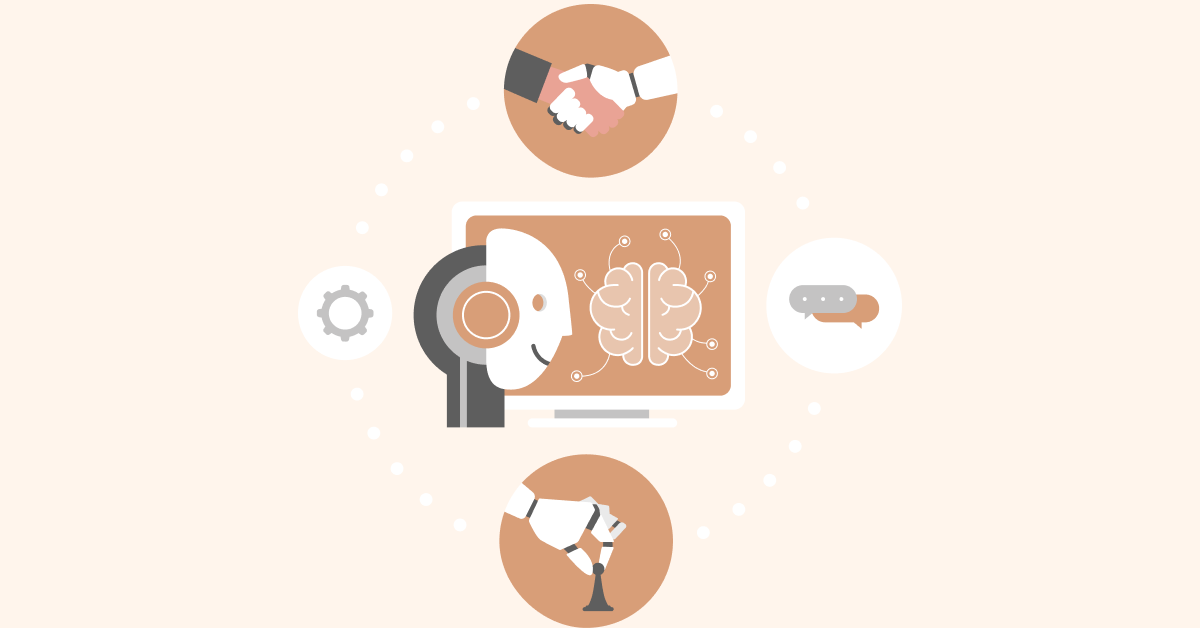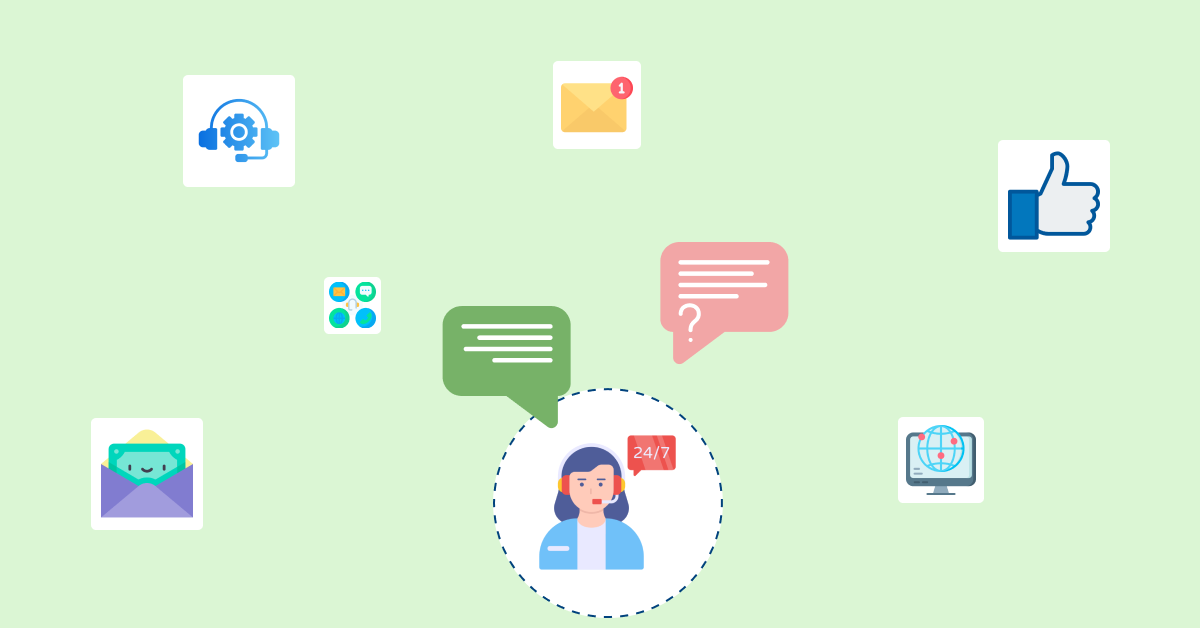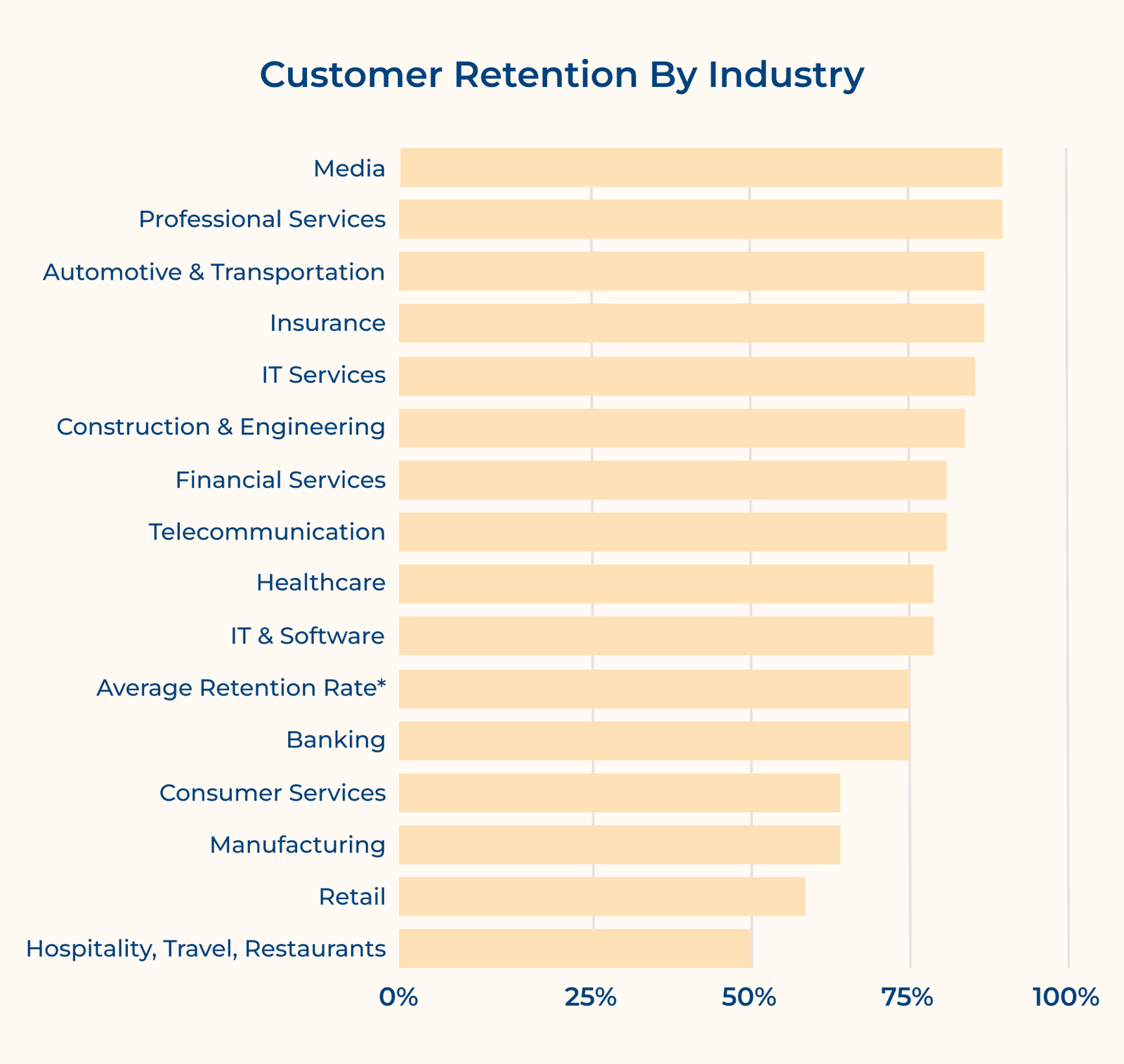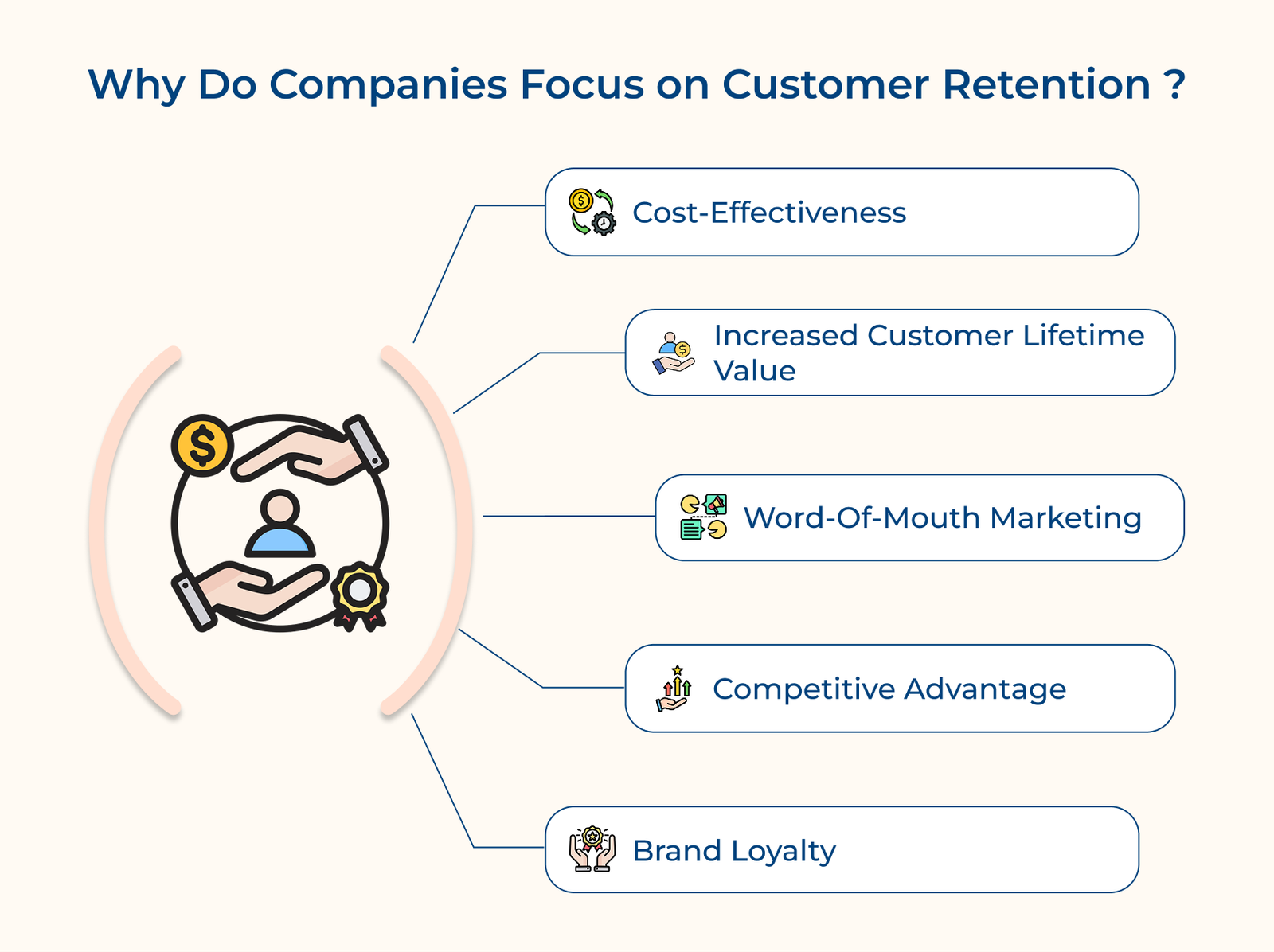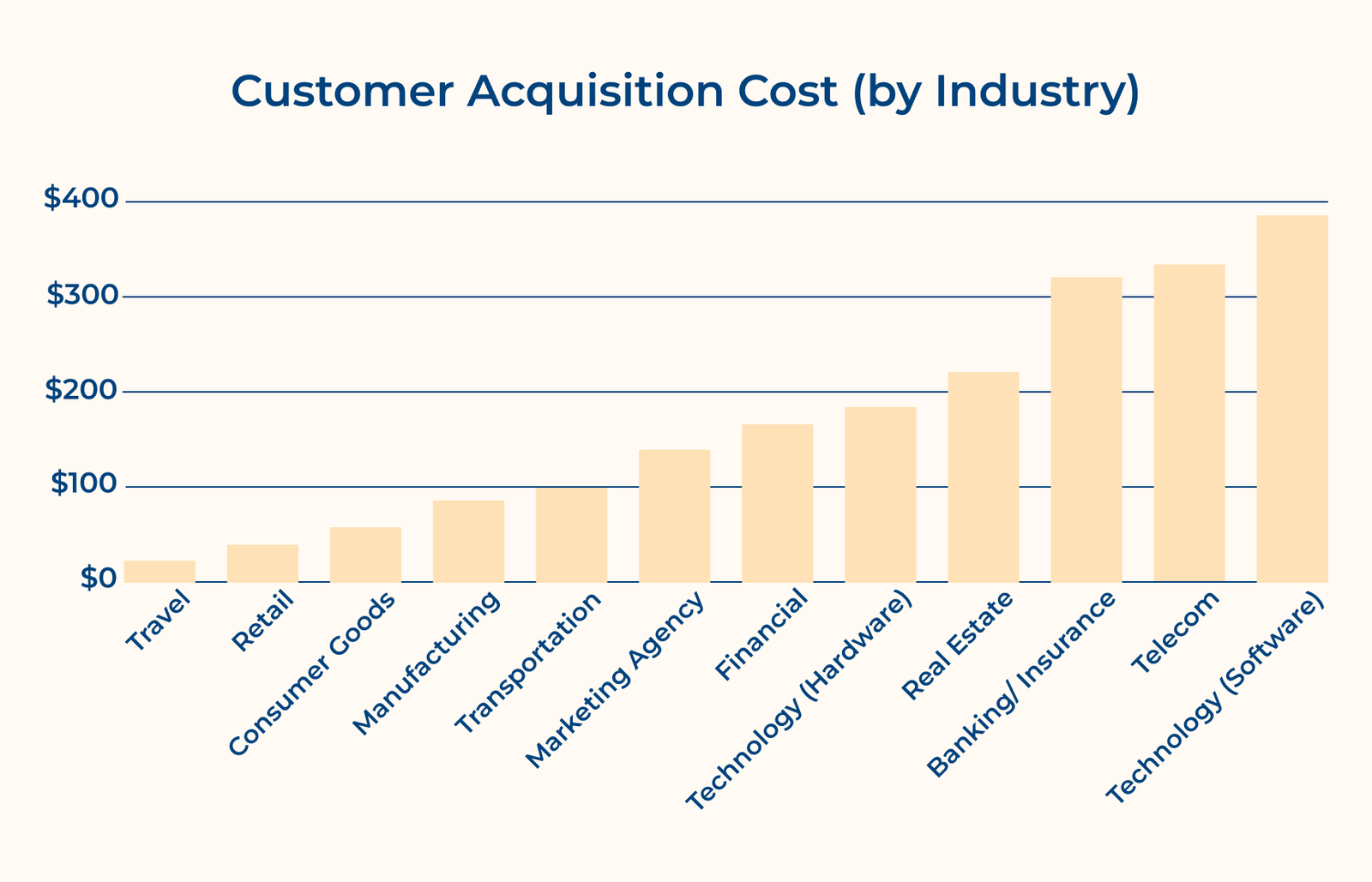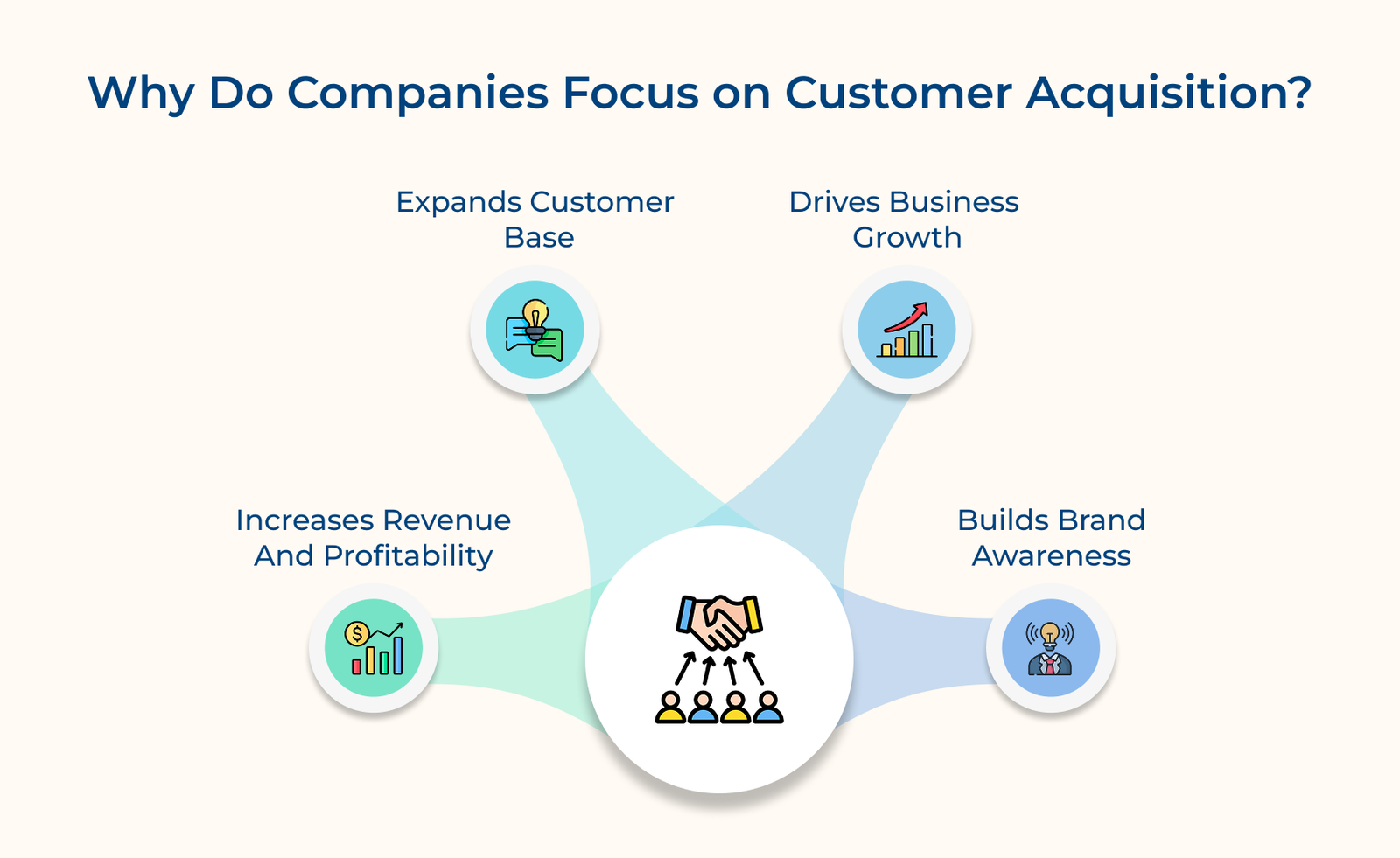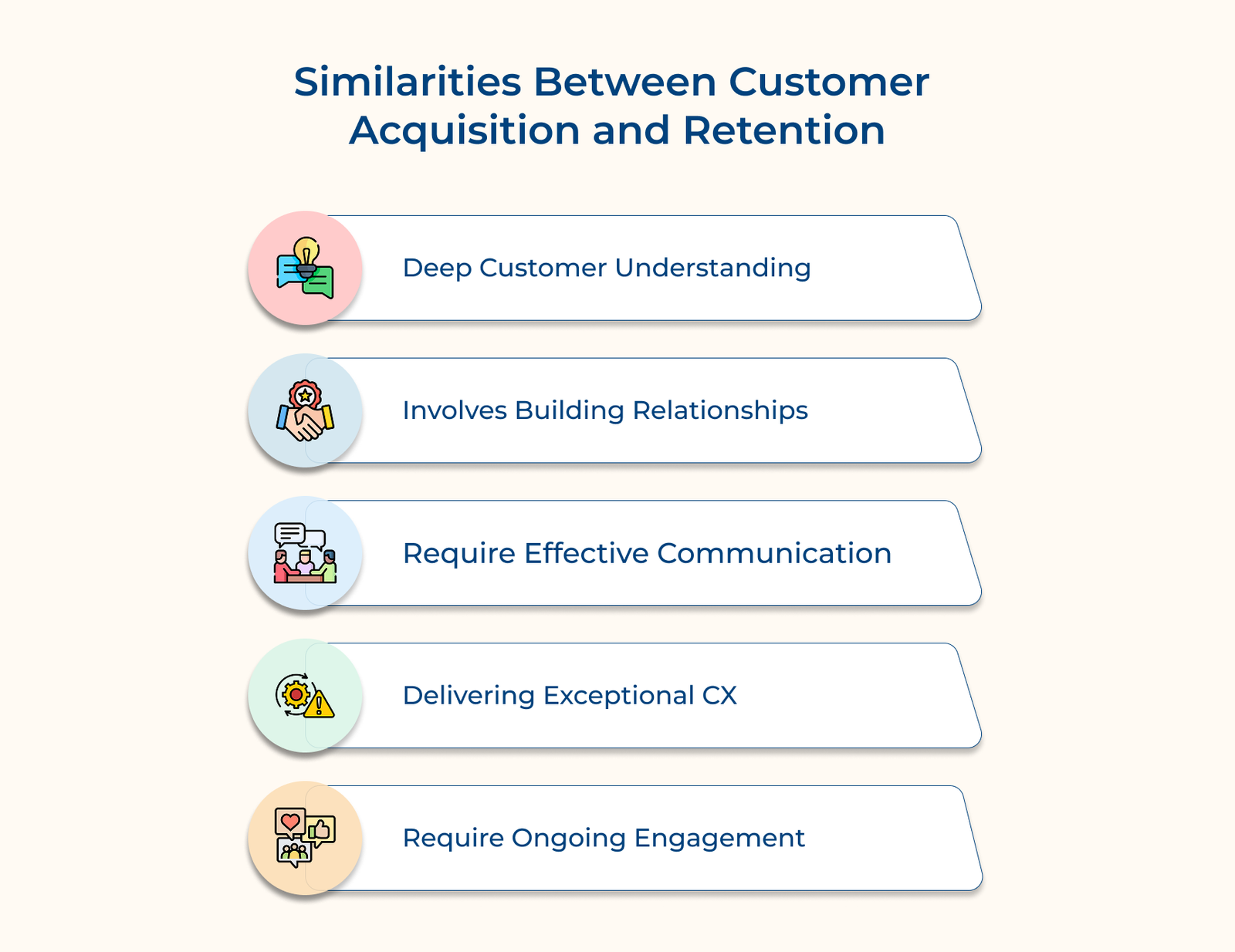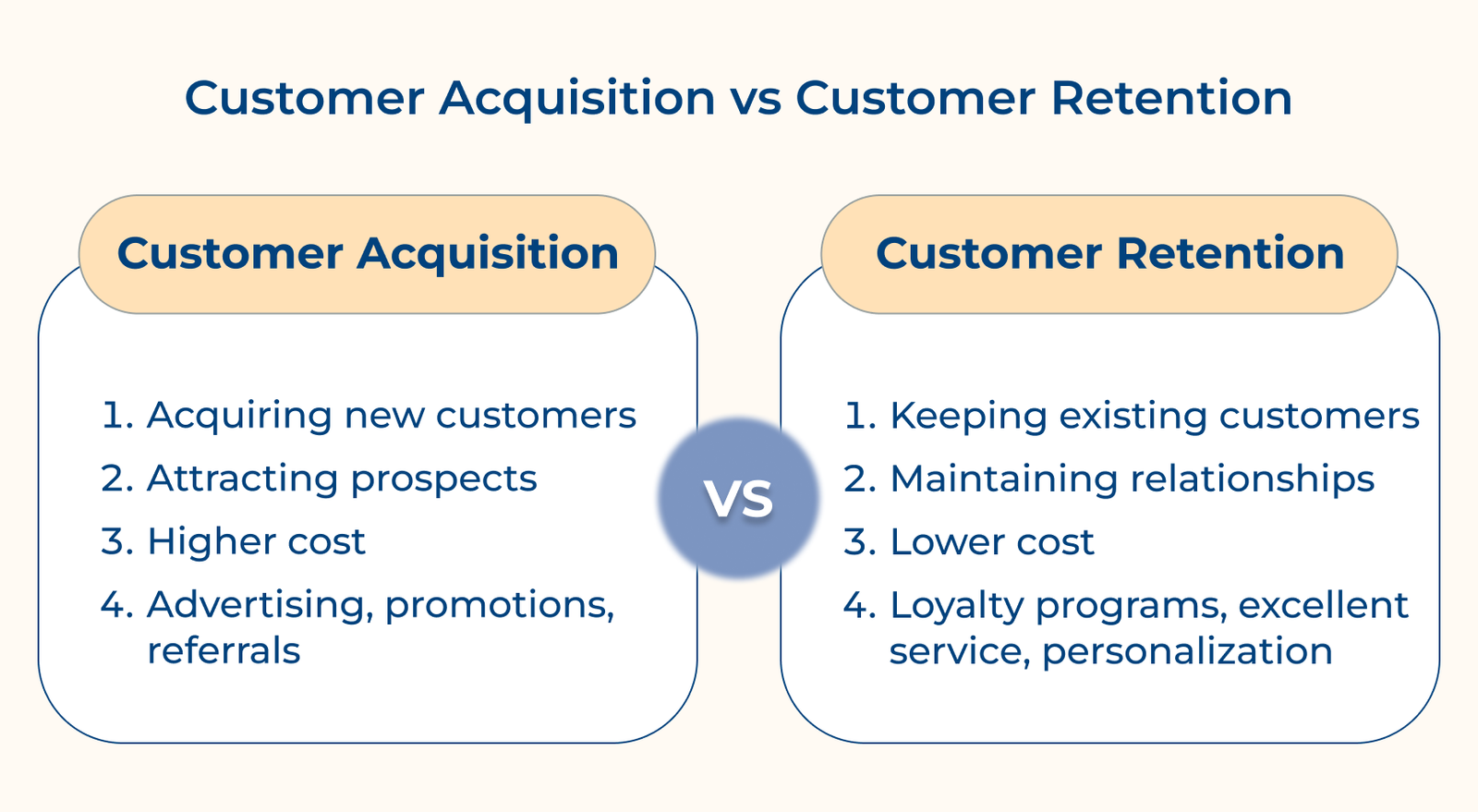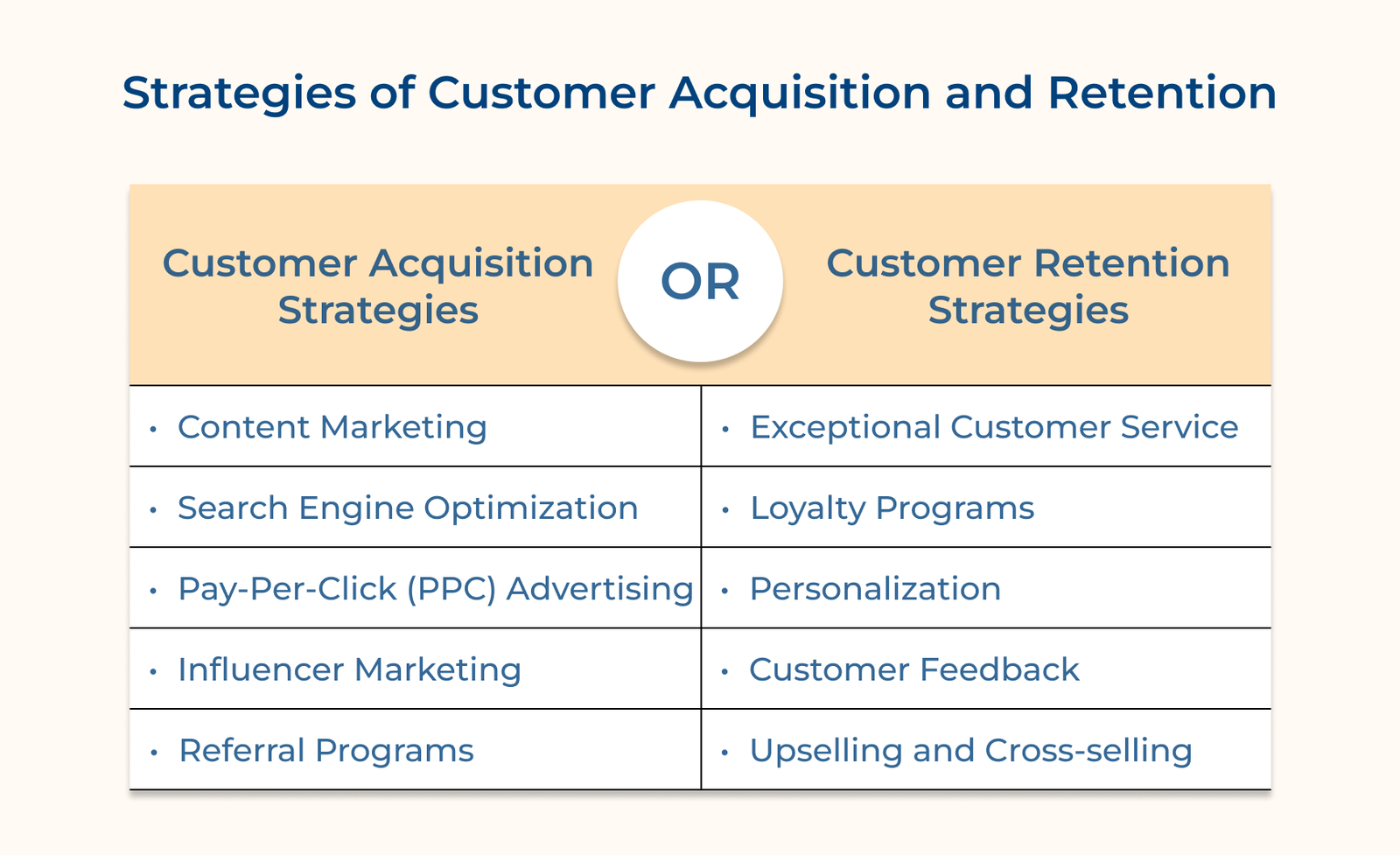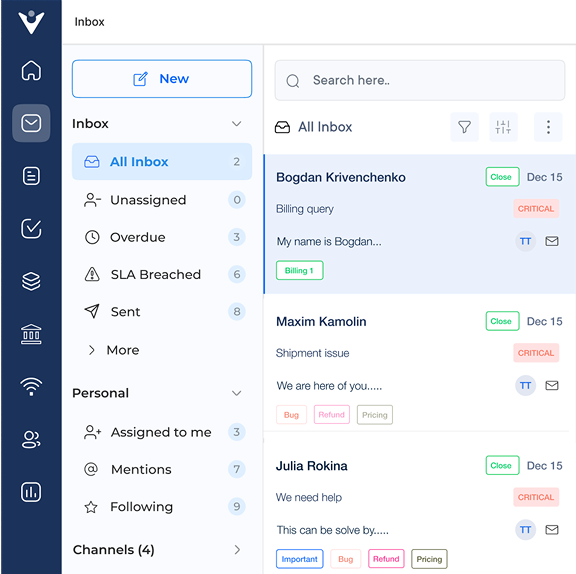1. Focus
The “focus” in customer acquisition vs retention differs significantly. Customer acquisition focuses on attracting new customers to the business. It involves strategies such as marketing campaigns, advertising, promotions and lead generation efforts. The focus is on raising awareness, sparking interest and turning prospects into paying customers.
Customer retention centers on enhancing and sustaining relationships with current customers. The goal is to ensure customer satisfaction, loyalty and repeat business. It involves efforts such as providing excellent customer service, offering loyalty programs, upselling and cross-selling.
Key Takeaways:
- Customer acquisition involves a wider approach that includes engaging new audiences, building brand awareness and generating leads. It demands a more outward-looking approach, often involving significant marketing and advertising investments.
- Customer retention requires a more concentrated effort on providing exceptional value and enhancing enduring relationships with current customers. It involves a deeper understanding of customer needs, preferences and behavior.
2. Cost
The “cost” factor plays a significant role in distinguishing customer acquisition and retention. The expenses associated with customer acquisition are usually greater and incurred earlier in the process. The costs can include marketing expenses, lead generation efforts, sales commissions and other promotional activities aimed at attracting new customers.
Customer retention focuses on nurturing existing customers, which generally requires lower ongoing costs. Retention efforts may involve investments in customer service, loyalty programs and relationship-building initiatives. The costs are often balanced by the higher lifetime value of retained customers and the decreased reliance on ongoing acquisition efforts.
Key takeaways:
- Customer acquisition is generally more costly because of the initial expenses involved in attracting and converting new clients. The costs can be substantial, especially in highly competitive markets or when targeting new segments.
- Customer retention is typically more cost-effective in the long run. Cultivating customer loyalty helps businesses achieve consistent revenues. It benefits from the compounding effects of customer loyalty and positive word-of-mouth.
3. Timeframe
The “time frame” aspect plays a crucial role in differentiating customer acquisition vs retention. Customer acquisition is generally a short-term strategy aimed at bringing in new customers quickly. The process involves intense marketing and sales efforts. It is often driven by campaigns or promotional periods aimed at generating leads and conversions.
Customer retention is a long-term endeavor that requires ongoing commitment and effort. Building enduring connections with customers requires consistent effort over time. It involves consistently delivering exceptional value, resolving customer issues and establishing trust or satisfaction over an extended period.
Key takeaways:
- Customer acquisition has a more immediate time frame, with businesses striving to attract and convert new customers quickly. The short-term focus enables quick adjustments to campaigns and strategies based on real-time performance data.
- Customer retention demands a long-term perspective. Businesses must consistently invest resources into maintaining customer relationships, addressing needs and enhancing customer experience. The benefits of retention efforts typically accumulate over time, resulting in greater loyalty and lifetime value.
4. Conversion Rates
Conversion rates typically refer to the percentage of potential customers who take a desired action. A high conversion rate signifies that the marketing efforts are successfully drawing in new customers and turning them into paying clients.
Conversion rates often refer to the percentage of existing customers who make repeat purchases, reflecting customer retention. A high conversion rate in customer retention indicates that the business is successfully retaining customers and turning them into loyal, repeat buyers.
Key results:
- Acquisition conversion rates focus on converting new leads into customers. Retention conversion rates concentrate on preserving and enhancing the loyalty of existing customers.
- Customer acquisition conversion rates are generally higher than those for customer retention. It is easier to convert new leads than to keep existing customers engaged.
5. ROI
Customer acquisition is the process of attracting new customers through marketing and sales initiatives. It can be a costly endeavor, as businesses may need to invest in advertising, promotions and discounts to attract new customers. The ROI for customer acquisition can be lower initially. The cost of acquiring a new customer can sometimes exceed the revenue generated from that customer.
The ROI for customer retention is typically higher. Repeat customers often spend more and demand less marketing investment to keep their loyalty. Focusing on customer retention allows businesses to increase their ROI by maximizing the value of each customer over time.
Key takeaways:
- Customer retention is essential for business in terms of ROI. It usually results in higher profitability compared to customer acquisition.
- While acquiring new customers is crucial for growth, businesses should prioritize customer retention as a key strategy for maximizing long-term ROI.
6. Engagement
The “engagement” aspect plays a crucial role in distinguishing customer acquisition vs retention strategies. Customer acquisition entails engagement strategies that mainly aim to capture the attention of potential customers. It often involves tactics like targeted advertising, compelling marketing campaigns and personalized outreach efforts.
Customer retention emphasizes engagement, aiming to build lasting relationships and maintain active interaction with existing customers. It involves initiatives like providing exceptional customer support. Providing personalized experiences, offering loyalty programs and consistently seeking feedback to enhance products or services.
Key points:
- Engagement efforts are aimed at generating initial interest and boosting conversions in customer acquisition. The primary goal is to grab the attention of prospects. Persuade them to become customers through compelling messaging and value propositions.
- Engagement is essential for nurturing long-term relationships and building loyalty in customer retention. Businesses must continually engage with their existing customers, responding to their changing needs and providing outstanding experiences. It reinforces the value proposition and strengthens the emotional connection.
7. Interaction
Interactions are generally more transactional, centered on persuading potential customers to make their first purchase during customer acquisition. The interactions often involve one-way communication through marketing campaigns, advertising and sales pitches.
Interactions are ongoing and aimed at building long-lasting relationships with existing customers in customer retention. The interactions are more two-way, involving active communication, feedback gathering and addressing customer needs or concerns.
Key takeaways:
- Interactions are primarily designed to capture attention, convey value propositions and drive conversions in customer acquisition. The interactions are crucial for attracting new customers, but they often lack the personalization needed to build lasting relationships.
- Interactions are crucial for understanding customer needs, addressing concerns and delivering exceptional experiences in customer retention. Businesses should prioritize two-way communication, actively solicit feedback and customize their interactions to suit individual customer preferences.
Strategy of Customer Acquisition and Retention
Here are essential strategies companies must follow for customer retention vs customer acquisition retention to ensure sustainable growth for their business:



